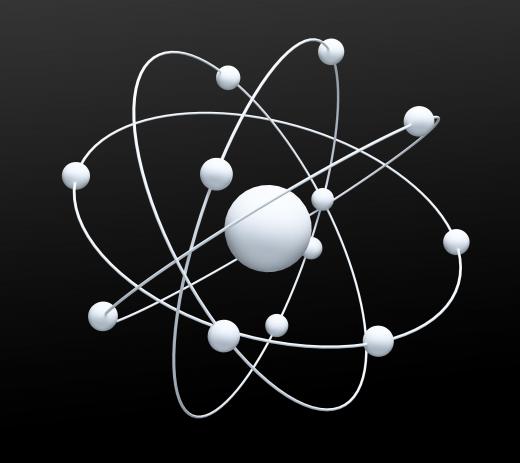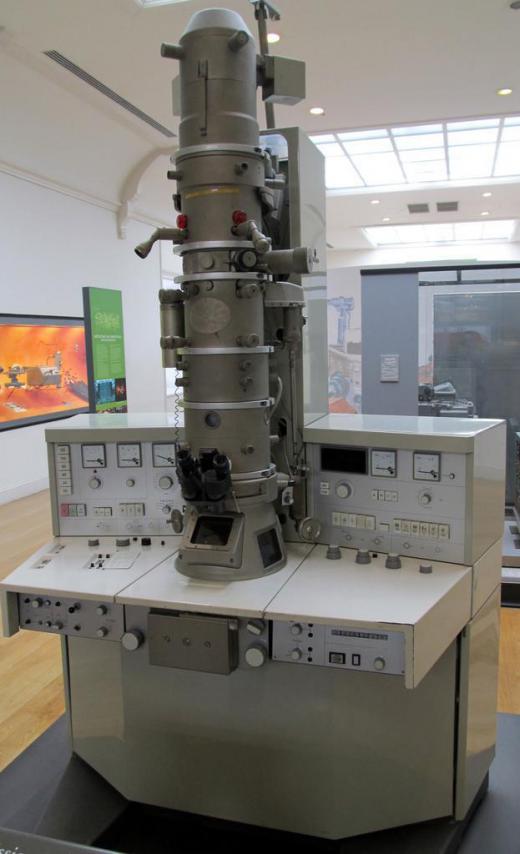What is a Proton?
 Michael Anissimov
Michael Anissimov
A proton is a subatomic particle found in the nucleus of all conventional atoms. The only place you can find matter without protons is in a neutron star or the core of powerful particle accelerators. The proton has a positive charge, which balances out the negative charge in atoms, electrons. If an atom has an imbalance of protons or neutrons, it is no longer neutral and becomes a charged particle, also known as an ion.
It is difficult to determine who, exactly, discovered the proton. Scientists theorized the existence of positively charged particles after the discovery of the electron by J. J. Thomson in 1897. Ernest Rutherford is often credited with the discovery, however, based on his experiments in 1918.

Rutherford fired alpha particles, which are essentially helium nuclei without electrons, into a nitrogen gas. His detectors found the characteristic signature of hydrogen nuclei being produced. After thinking about it for a while, he realized that these hydrogen nuclei could have only come from the nitrogen gas. This led to the theory that the nucleus of a hydrogen atom was an elementary particle, the proton, and that protons could be found in the nuclei of all atoms.

The properties of atoms are defined by the number of electrons, neutrons and protons they have. The number of protons is the most significant variable, however. This variable is so significant, in fact, that the number of protons in the nucleus of an atom is referred to as the atomic number, and atoms are named based on the number of protons they have.
The atomic number is the most physically relevant characteristic of an atom. Atoms with low atomic numbers are the most prevalent in the universe, because they are the easiest to form. This is why hydrogen and helium are the most abundant elements in the universe.
In 1955, the proton's evil twin, the antiproton, was discovered. Instead of having a positive charge, it has a negative one. Like all antimatter, it explodes upon contact with normal matter.
Protons are also a favorite among experimental physicists who like to accelerate them to significant fractions of the speed of light. Ballistic protons are responsible for a lot of discoveries in the huge "Particle Zoo" that 20th century physics generated. Unlike their cousins, neutrons, protons are stable outside of an atomic nucleus, making them useful for purposes of experimentation.
AS FEATURED ON:
AS FEATURED ON:












Discussion Comments
Only the number of neutrons or electrons can vary in an element without changing the actual element.
Ions have a positive or negative electric charge because of an absence or abundance of electrons, not protons. Isotopes on the other hand are still neutral, but they are less stable than the abundant form of the element because they have extra neutrons. Only in a few rare cases do elements have more protons than neutrons (hydrogen, rare and unstable isotopes).
For example, oxygen can have multiple neutron configurations making them different isotopes, but a oxygen atom will always have 8 protons. Oxygen is also an anion because it has a negative two charge, meaning that it has two more electrons than protons.
@ PhGuy1- The number of protons in a solution depends on many different factors. There is not enough information to determine what you are asking. Protons are dependent on the element in question. Each element has a distinct number of protons that never change. You would need to know what is in the solution, how the volume of the solution, the atomic mass of the element or elements in solution, the weighted mass of each element in question, or a combination of a few of these variables.
What is the proton concentration in a solution at pH 4.0 ?
Post your comments